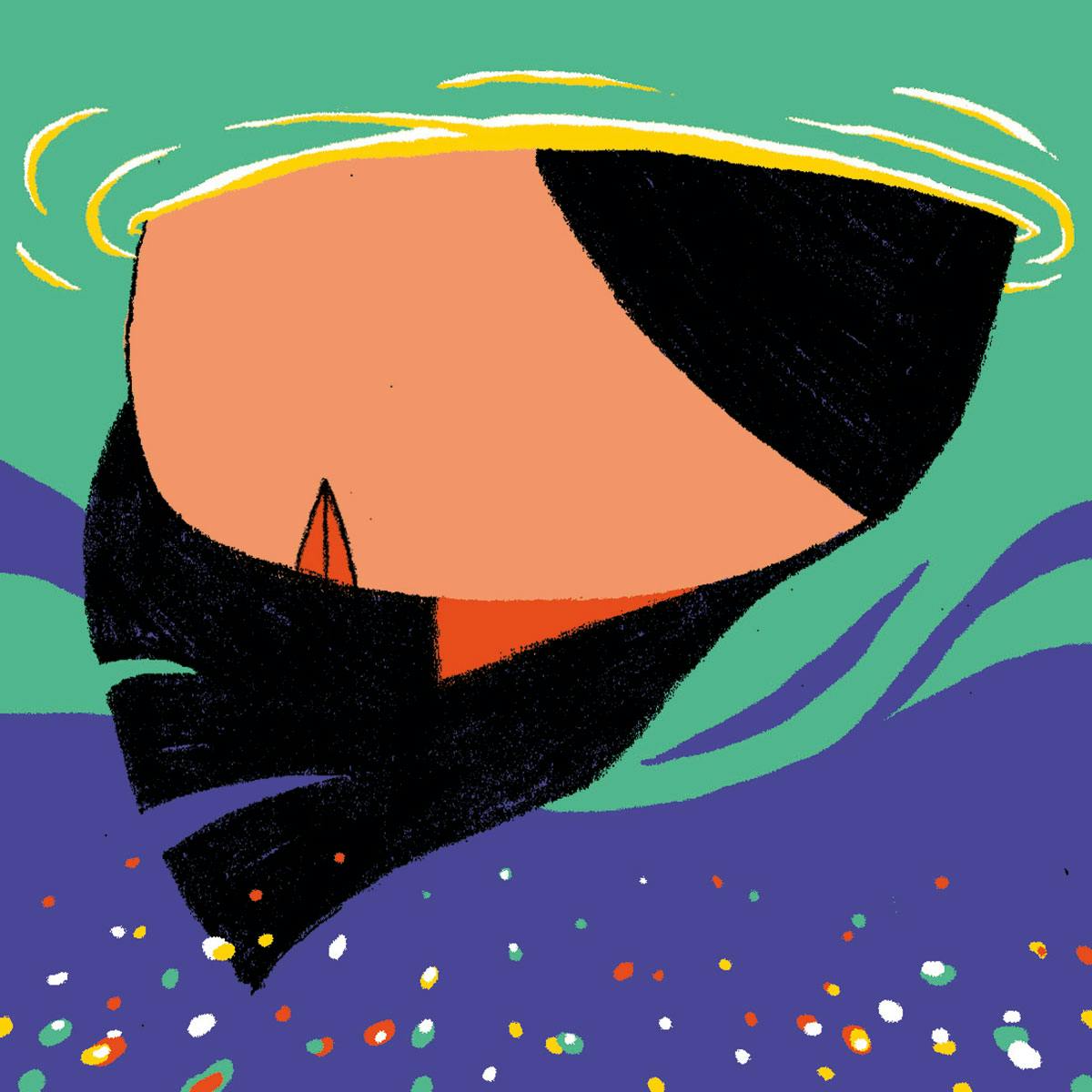“I was always quite good at drawing, and from early on kind of defined myself by it,” says Hamburg-based illustrator Janik Söllner. When he was 16 years old, Söllner showed his portfolio to a professor at an academy of fine arts. “The professor who reviewed it took a look and told me it wasn’t art, but illustration. That was the first time that I’d heard of it,” he says.
Having a natural inclination towards concepts and ideas, Söllner went on to study communication design at the University of Applied Sciences Wuerzburg. “Part of it included illustration classes, which were my main focus,” says the illustrator. “Afterwards, I got my master’s degree in information design, still working very theoretically — at least for a designer. I would say the main thing I learned from it was some sort of visual vocabulary, and the ability to reflect on my drawings and the ones of others.”

Söllner describes his style as simple, as it combines rough black outlines with plain but bright colours. “I try to find a funny or unusual perspective in the things I draw, regardless of whether it’s self-initiated or commissioned. And I try not to limit myself too much in what I draw, but to push the boundaries of my style further and further, since I am still quite new in the field of illustration,” he explains. “I am very much influenced by the illustrations of Jean-Michel Folon, Tomi Ungerer, and Celestino Piatti – and I adore the drawings of Mari Kanstad Johnsen, Cristóbal Schmal, and Anna Haifisch.”
Despite being new to the illustration scene, Söllner has already racked up an impressive list of clients including SZ-Magazin, Melitta, Hohe Luft Magazine, and the New York Times among others. “To me, it seemed to be the most accessible field of illustration to work in with my approach to drawing,” Söllner says on why he went down the editorial illustration route. “I send my portfolio out to art directors, and if someone actually writes back it usually is a clear proposal and a short deadline. It feels like editorial illustration is like a sprint, compared to book illustration, which is more of a marathon.”


The illustrator’s images are angular and jaunty with awkward elbows and swirls of colour bringing his black lines to life. Söllner says he’s fast at coming up with ideas and he works fast, which suits the pace of editorial commissions well. “The topics vary so it is always interesting, and it is very satisfying to have the magazine with your illustration in the mailbox shortly after,” he says. The perfect brief for Söllner is one that comes with as much information as possible about the text it’s for. “It is also very helpful to get some pictures or a rough layout sketch along with it, if the art director already has a loose vision how it could turn out in the end,” says the illustrator.
“Even if the deadline is very tight I need to take a short break before I start drawing. I take a walk, re-read the brief and drink a cup of coffee,” Söllner says of his process. “Then I start sketching. I try to stay loose and work quickly, and let the process guide me. When I have gathered some strong ideas I scan them in and send them to the art director before I can overthink them. Later on I try to keep this lightness from the start, and not get to stiff in the process.” Söllner typically uses HB pencils for the outlines of his figures, he then scans his drawings with a very high contrast. “Then I add colours in my old dusty version of Photoshop,” he says. “I like it when you can still see the grain of the graphite in the final illustrations a little bit.”


In the last year Söllner has been teaching drawing and illustration classes at the same university he studied in, though for the last few months he’s been doing it remotely via Zoom calls and emails. While the world has been in lockdown, Söllner has also been reflecting on things many creatives can sometimes face. “My constant worry is of losing it, that thing that defines my style and makes people like my illustrations, whatever it is, but besides that I have been doing well recently,” Söllner says.
The illustrator is early in his career, but already he’s picked up a few pieces of advice for his fellow creatives. “In my opinion, I don’t think you should try too hard to get commercial projects while you are studying,” Söllner says. “If you are not already set in your way of drawing that will be visible in your work, and it can take the fun away out of the projects you do in class. Also, you should learn to deal with rejection or even no response at all when sending out your portfolio!”





The post Janik Söllner’s dynamic editorial illustrations jump off the page appeared first on Creative Review.
from Creative Review https://ift.tt/2AvdhNa

No comments:
Post a Comment